#crux japan
Explore tagged Tumblr posts
Text




I have an obsession with sticker books now.
Source: instagram - @ soopearlshy
#girlblogging#this is a girlblog#kawaii#かわいい#平成レトロ#heisei retro#kamio japan#crux japan#japanese stationery#stationery#Animecore#kawaiicore#cute blog#stickers#kidcore
35 notes
·
View notes
Text

持ち歩きDSのカバー着せ替え。
#3ds#nintendo ds#angel blue#stickers#kawaii#y2k#2000s#kidcore#cute#old tech#heisei retro#heisei#heisei era#q lia#crux#kamio japan
2K notes
·
View notes
Text

わたしもたくさんお気に入りシール貰っちゃった
629 notes
·
View notes
Text
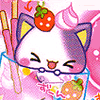

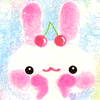

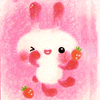


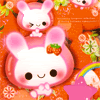

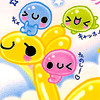
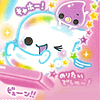
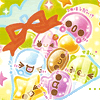
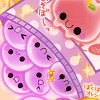


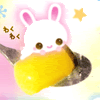

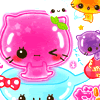




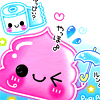

requested by @hope-4more
707 notes
·
View notes
Text

Memo sheet, Crux
83 notes
·
View notes
Text
配置変えた🥰

#decor#shelf#heisei#heisei era#heisei retro#stationery#stationary#crux#kamio japan#q lia#kawaii#kawaiicore#y2k#2000s#cute#pink#sanrio#san x#sanriocore#kidcore#rainbowcore#precure
58 notes
·
View notes
Text

🍀 clover babies stickers by me GloblinBby 🍀✨🌈🍀 I made regular size and mini sticker flakes and some mini glitter clovers for freebies 🍀💖 can be found on my etsy 🌈🍀
#clover#clovercore#stationery#stickers#heisei retro#kawaii stationery#2000s#2000s core#y2kcore#y2k aesthetic#y2k style#y2k#kawaii#kawaiicore#webcore#frutiger aero#00s#cute animals#animal stickers#🍀#aesthetic#corgi#hamster#puppy#kitty#kamio japan#crux#q lia#memo pad#weebcore
93 notes
·
View notes
Text

i love heisei retro
#2000s#angel blue#heisei gyaru#heisei retro#kawaii#mezzo piano#pins#sanrio#crux#q lia#kamio japan#nostalgiacore#nostalgia#kidcore#aesthetic#plushies#trinkets#charms#sanriocore#mocha#cinnamoroll#hello kitty
46 notes
·
View notes
Text
“You’re as sweet as icing and warm as an oven! .•+*~🎀🧁”


(Edit: Why tf did tumblr mark this as mature 💀)
#cookie run#cookie run kingdom#crk#cookie run ovenbreak#crob#cookie run ships#cookie run ship#cookie run fanart#birthday cake x whipped cream#whipped cream x birthday cake#birthdaywhip#birthday cake cookie#birthday cake#whipped cream cookie#cutecore#cutecore art#q lia#kamio japan#crux stationary#wancore#Hesei retro
19 notes
·
View notes
Text


Clover sticker sack CRUX (early 2010's)
My dad bought these for me when I was 12, I still cherish them a lot.
4 notes
·
View notes
Text




平成ファンシーてんこ盛りフレームだよ
#transparent#borders#kawaii#heisei#q lia#stationery#stationary#memo pad#crux#kamio japan#heisei retro#heisei era#kawaiicore#2000s#y2k#cute#pink#sanrio
1K notes
·
View notes
Text


[Text: The Anomaly and Hexcorization are major events in season 2, and they involved a lot of innovative design work on the Riot and Fortiche sides. As usual, Fortiche drew from sources that might have looked far-fetched but ended up looking completely natural to their new context. Gold, for example, is a recurring motif in both of these events, and for its use in the show’s design. Anne-Laure To, from Fortiche, brings up the influence of kintsugi, which is a repair technique in Japanese ceramics. How could that possibly figure into Piltover or Zaun, which are technically not related to Japan? The connection actually comes from the very concept of kintsugi rather than specific pieces. “Legend has it that an emperor broke a bowl that he loved, probably from an earlier dynasty, and that had great artistic and monetary value,” To said, recounting the origins of the technique. “He asked several artists to repair it and they said it was impossible. An artisan came in with the idea to fill in the cracks with gold, to emphasize the cracks themselves. So the object became even more valuable because the new technique had sublimated the cracks. It’s visually striking but it’s also full of meaning, and it was interesting to us because some characters might be deformed in some way, which impacts the way they move.”
The idea of a repair that actually alters something’s nature is especially poignant in the case of Hexcorization, which refers to the way Viktor’s life is somehow saved by [the] Hexcore at the start of Season 2, while being irremediably changed by it at the same time—Arcane is, in part, about trying things out, sometimes with little idea of the consequences. The Anomaly and Hexcorization are examples of Riot and Fortiche setting an almost experimental course in both storytelling and design, incorporating classic science-fiction themes (and visuals) such as biomechanical mutations and the exploration of mind power.]
***
OK, so i saw this floating around on Pinterest and thought hey, pretty art! but then i started reading the text and this passage struck me:
“An artisan came in with the idea to fill in the cracks with gold, to emphasize the cracks themselves. So the object became even more valuable because the new technique had sublimated the cracks.”
Which interestingly, goes against the crux of Viktor’s villain arc—the idea that physical “impurity” and the fickle nature of emotion, and thus leading him to denounce humanity as a whole:
“It's inescapable. Humanity. Our very essence. Our emotions... Rage. Compassion. Hate. Two sides of the same coin. Inextricably bound. That which inspires us to our greatest good is also the cause of our greatest evil.”
And thus what is needed to “fix” the world is “a repair that actually alters something’s nature [which] is especially poignant in the case of Hexcorization”—something that moves away from the human condition, rather than embracing it with all its flaws, as with kintsugi, where “the object became even more valuable because the new technique had sublimated the cracks”—not an erasure, but a radical acknowledgement and embracement
So then we we have Jayce’s dialogue:
“You’ve always wanted to cure what you thought were weaknesses. Your leg. Your disease. But you were never broken, Viktor. There is beauty in imperfections. They made you who you are. An inseparable piece of everything… I admired about you.”
Viktor is Jayce’s kintsugi bowl. Not someone to be loved because of an other “perfect” and “cured” self, but someone to be loved because of the whole sum of themselves
So this vital contradiction of the philosophy of kintsugi and the process of Hexcorization, as much as they share visuals, is just incredibly fascinating to me
82 notes
·
View notes
Text
gotta put my thoughts down before i forget it but the thing that did it in for me is how spy x family is ultimately and uniquely a “children-focused” work, where the major stakes require that we pay attention to the lives and dynamics of young children so that — specifically — we have to genuinely engage with and invested in their inner lives, motivations, desires, thoughts, emotions, etc.
i think this is a very unique focus in the shounen sphere, where the audience and creators are centered about adolescent boys (the shounen genre, in its name) and thus have a very wide scope of focus that nonetheless has “aged” past “childhood”. usually media about children and childhood are sequestered in its own genre (children’s shows like doraemon, magical girl anime like precure series, etc.) aimed at a different target audience who are in the same demographic as the main characters in the shows. this is, obviously, not a bad thing. but i appreciate the “genre-breaking” focus that spy x family have because it inspires a sort of empathy to children, who are often not the most favorite group of people for the typical demographic of shounen readers, that is specifically vital in today’s climate. (can’t say much about japan itself, who historically has been dealing with declining birth rates, but oh i can speak for the american individualism— ironically where sxf is also very popular in) another thing about this is it’s drive home how intertwined the family life is, and should be. agent twilight and thorn princess’s plot-lines are clearly shounen-esque (a spy fighting for world peace, an assassin weeding out traitors) but they are nonetheless inextricable from the family- and anya-focused story, because by choice or circumstances they are anya’s parents. they’re a part of a larger societal fabric that embedded them in relationships to others — children being one of them. i think that’s pretty neat.
another thing, specially about the depiction of children in sxf: they are fictitious yet realistic enough to portray real children and inspire sympathy for them. a lot of asian home media in general have the problems of portraying young children as “problems”: annoying, loud, privileged, dumb, ungrateful, etc etc. these are such complaints about children that are unfortunately way too common and way too ungenerous and mean-spirited; none of these tropes are present, even in a media full of scions and heiress. complaints about them being brats (red circus bus hijacking arc) was rightfully framed as unsympathetic and unreasonable (they’re children! they can’t help where they were born into— it goes both ways.) i think the crux of this beautiful balance sxf struck in portraying nuanced, dynamics children is sympathy. they can be loud, they can be whiny, cry at the drop of a hat, has too much energy, gross, have bad grades, clingy, inconsistent, academically unmotivated, ran off randomly— and that’s fine, because we know why they do it, we are given space into their inner thoughts, something so rarely afforded to real life children at times. but they can be motivated, they want world peace, they want to have genuine friends, they want their friends to be happy, they have crushes, and most of all they love their parents and they love the people around them.
i think regardless of everything sxf is a work that understands that children are full of love and the majority of the things they do are out of love. i think that alone makes it incredible in the current socio-econo-political climate where sympathy is spared so little and humanity spreads so thin children barely gets what they deserve. i suppose that’s the sort of war we are entrenched in.
#spy x family#spy x family meta#i guess?#it’s late and i have been rereading spy x family obsessively to cope and i just#have a lot of feelings about it#anya forger#damian desmond#becky blackbell#damian’s friends too but i don’t know their full names. sorry kids.#all of these children are so precious and i would die and kill for them and would live to build world peace for them. if you catch my drift
245 notes
·
View notes
Text

Memo sheet, Crux
64 notes
·
View notes
Text
🩵ྀི平成のシャカシャカシール🩵ྀི




#stickers#q lia#kamio japan#crux#stationery#stationary#heisei retro#heisei#heisei era#kawaii#kawaiicore#y2k#2000s
68 notes
·
View notes
Text

rainbow clover sticker sheet made by me GloblinBby 🍀🌈💖
#kawaii#stationery#decora kei#rainbow#rainbowcore#stickers#clovercore#clovers#kawaii stationery#heisei retro#kawaiicore#heisei gyaru#heisei moe#japanese stationery#japanese stickers#memo pad#kamio japan#q lia#cute sticker#sticker sheet#sticker flakes#crux
31 notes
·
View notes